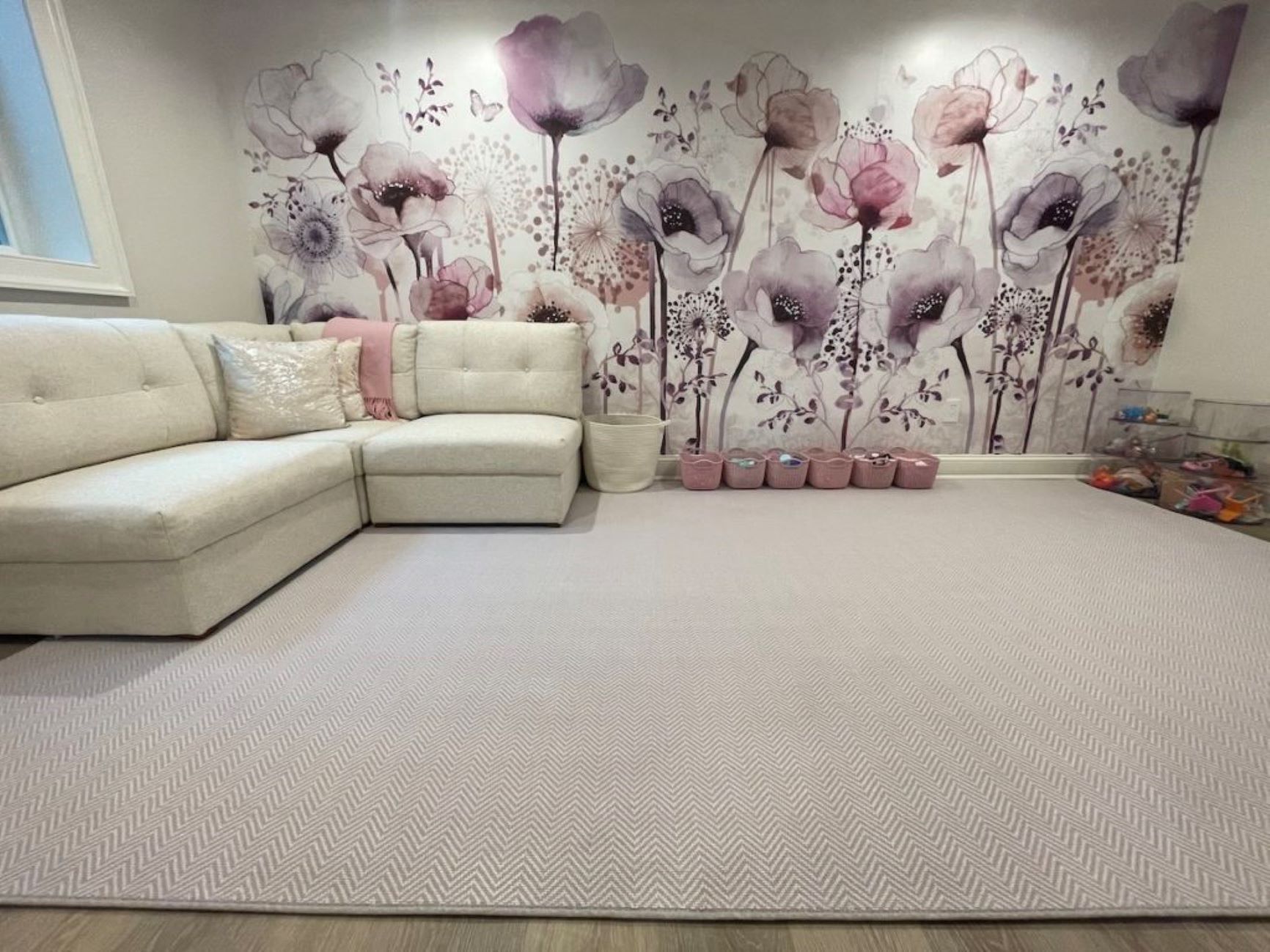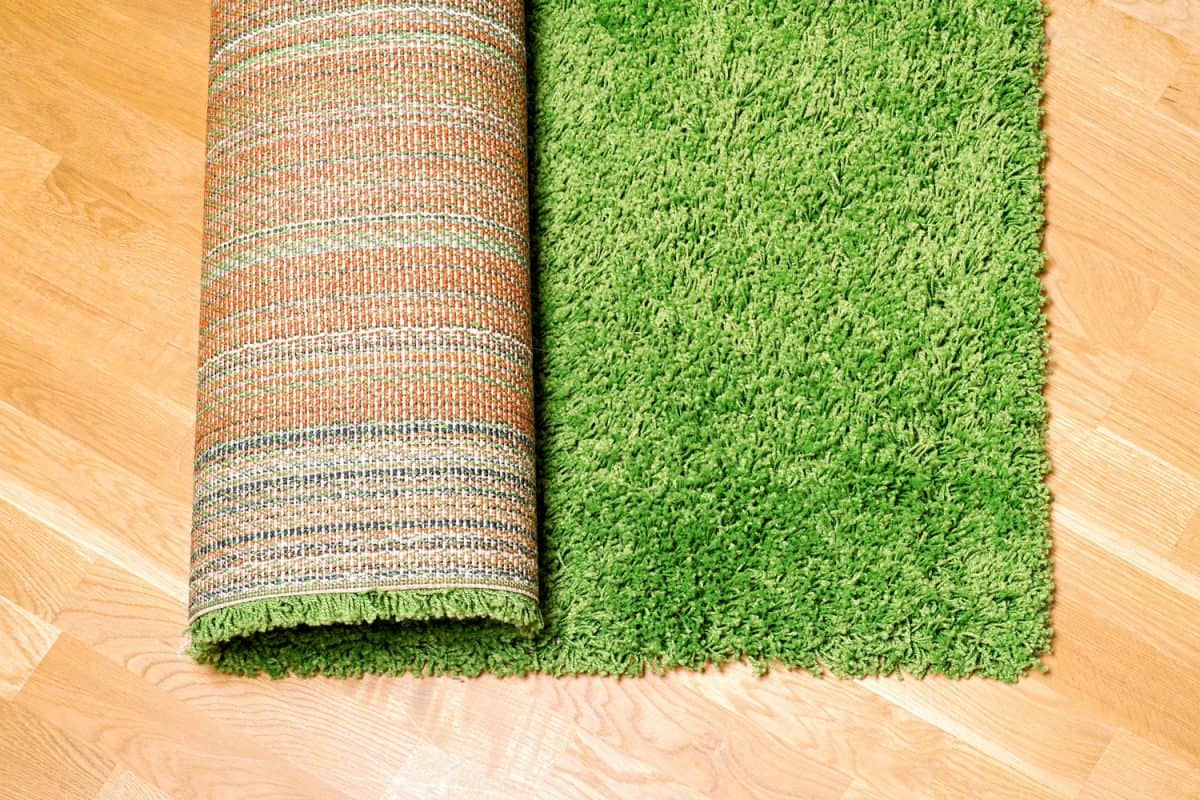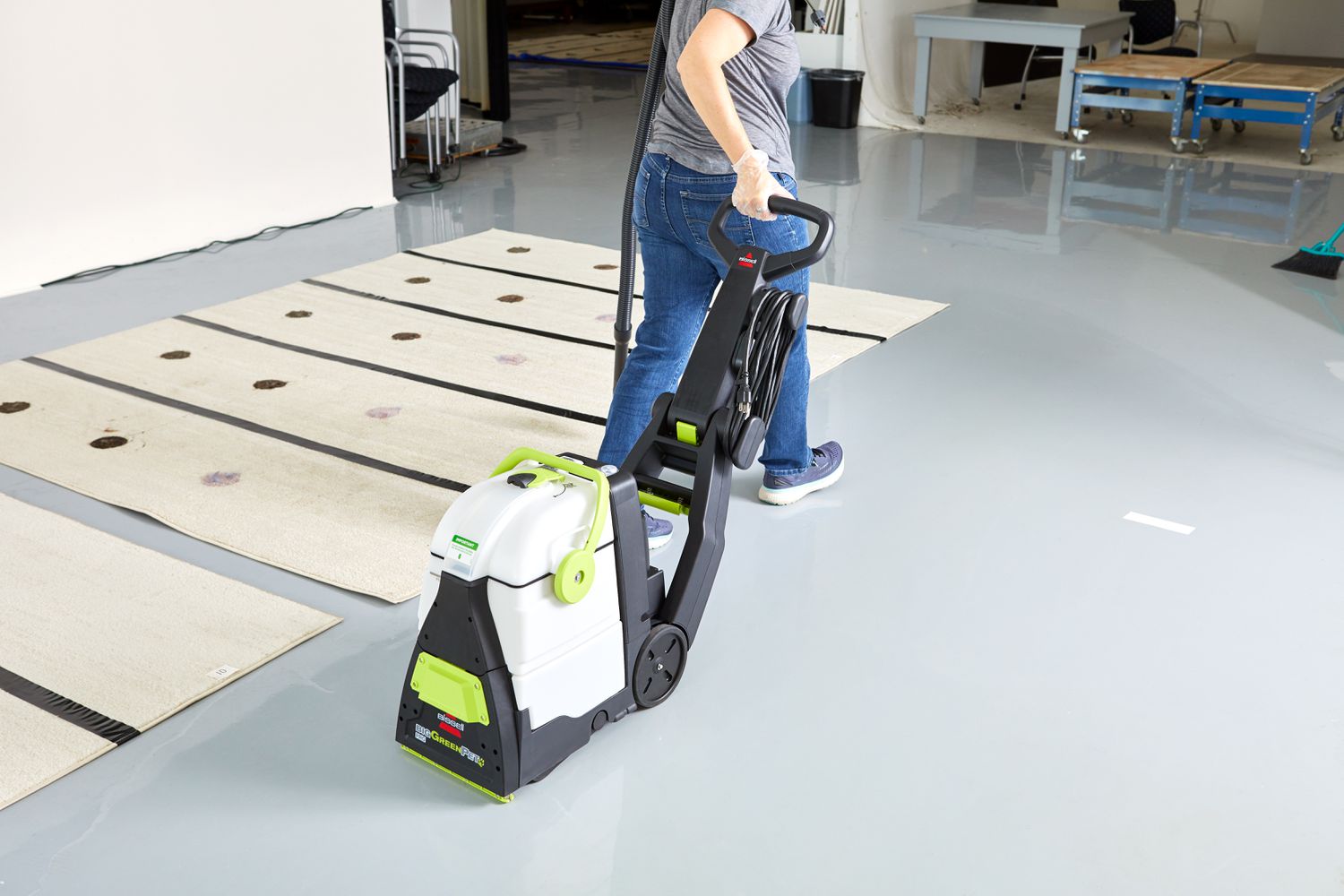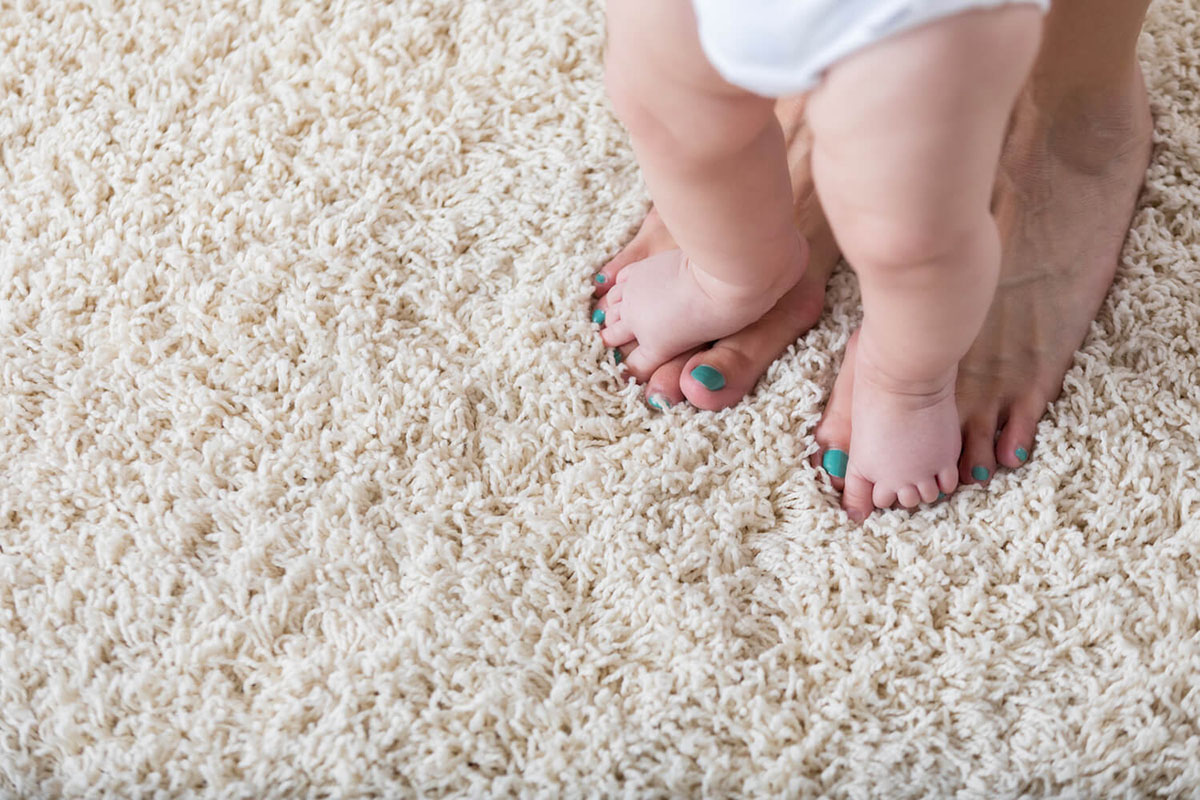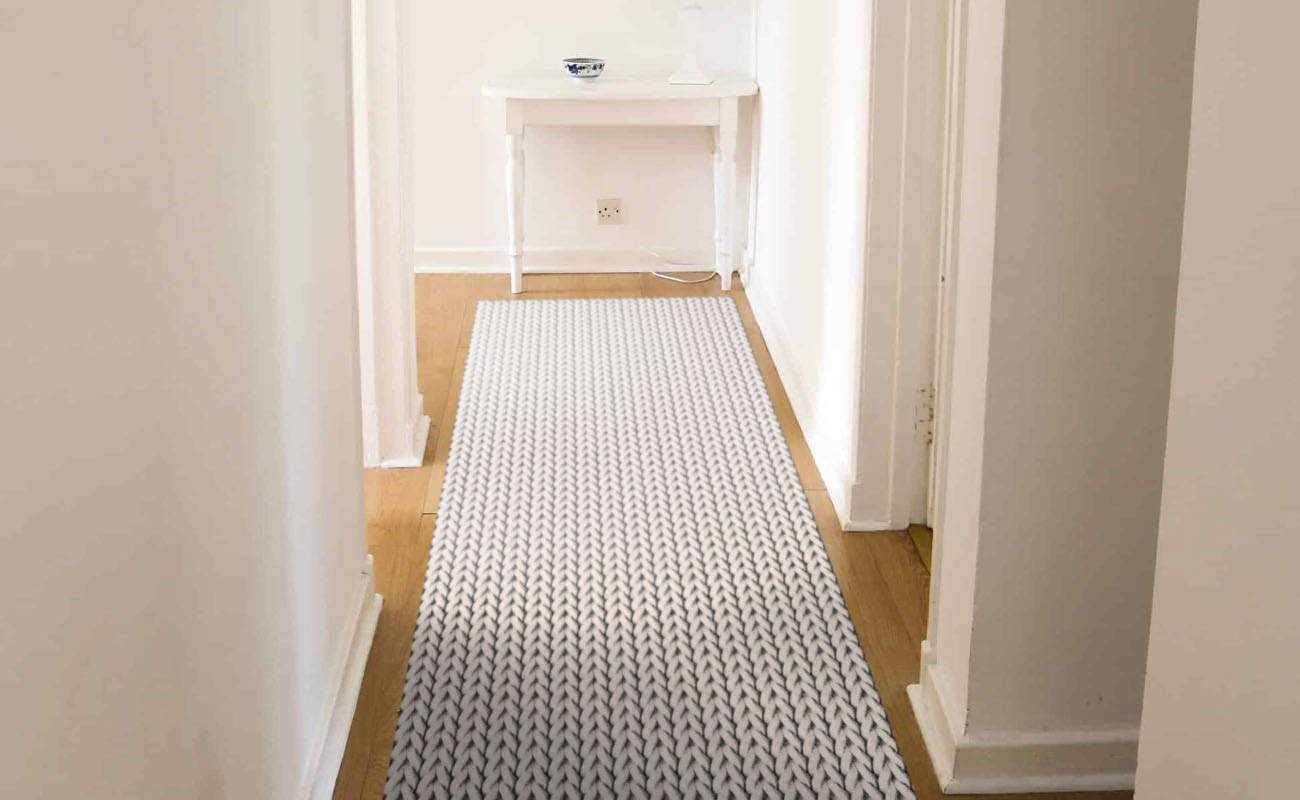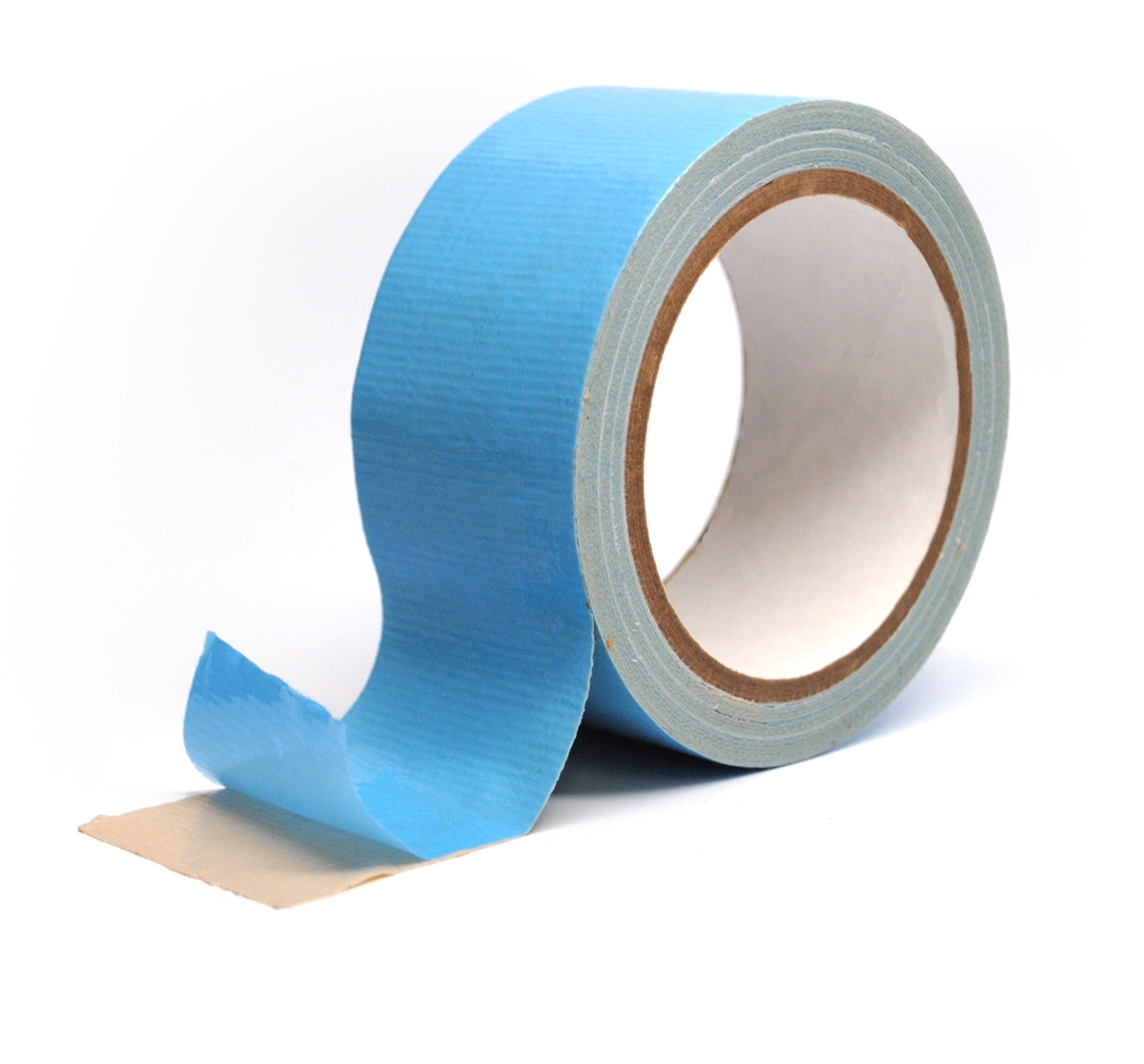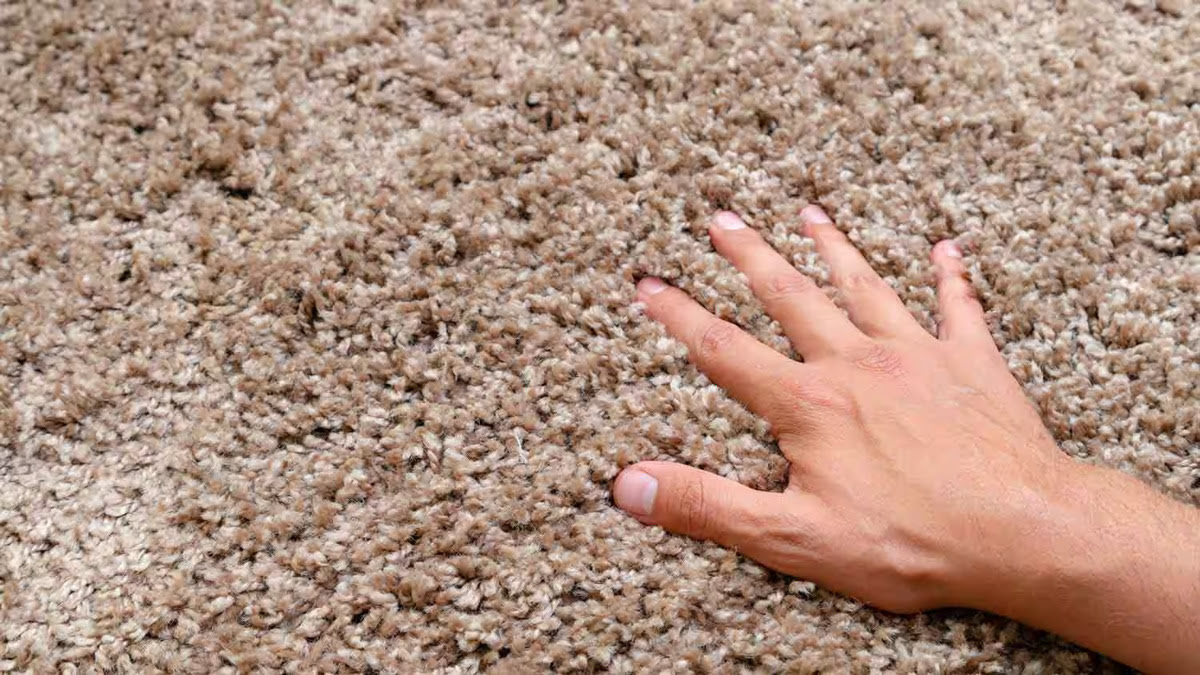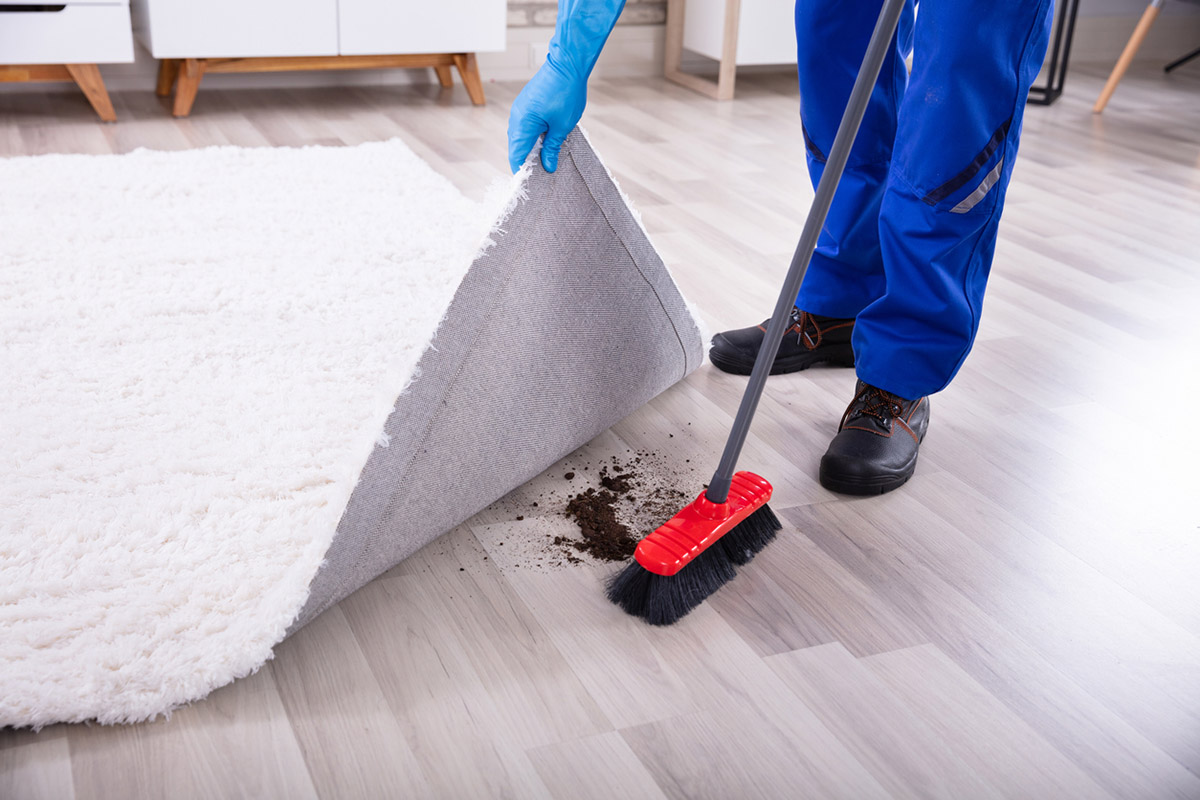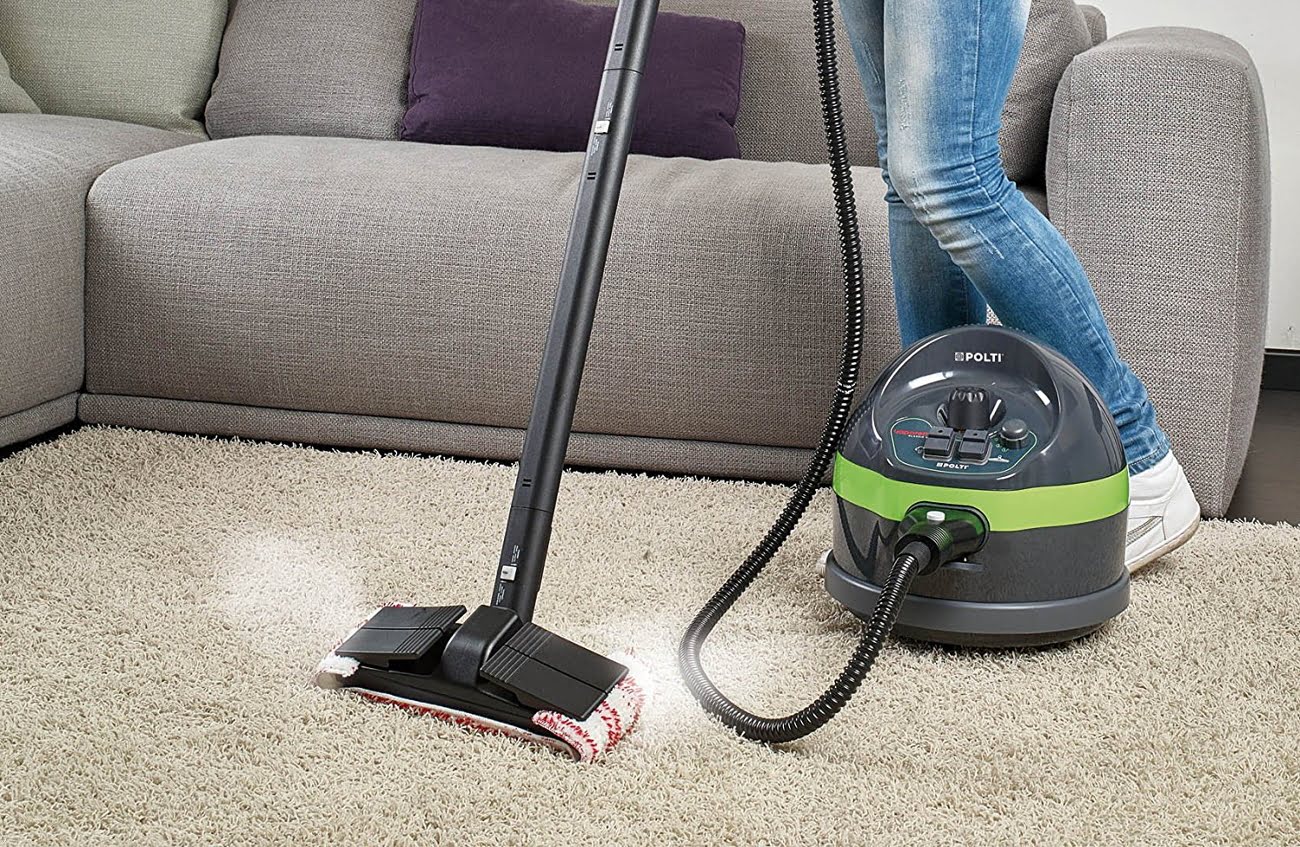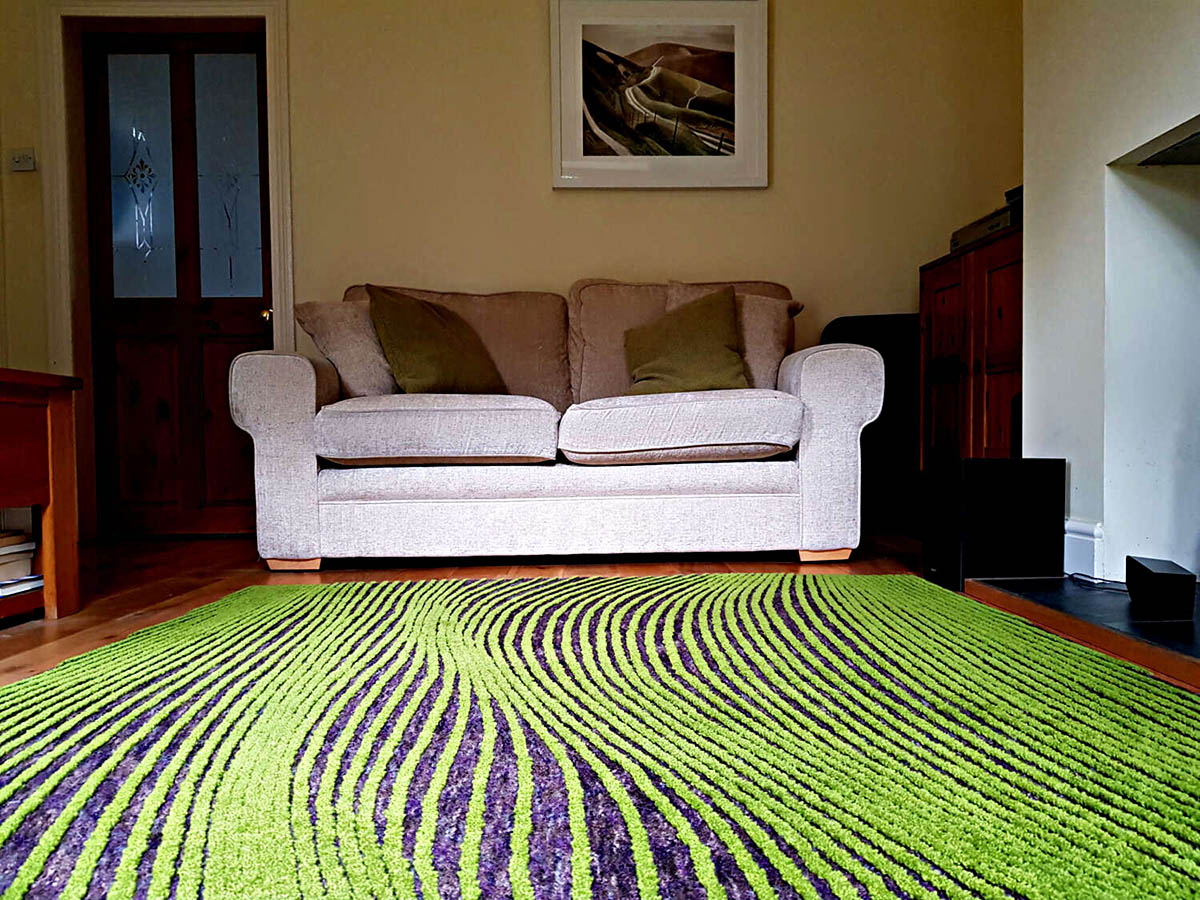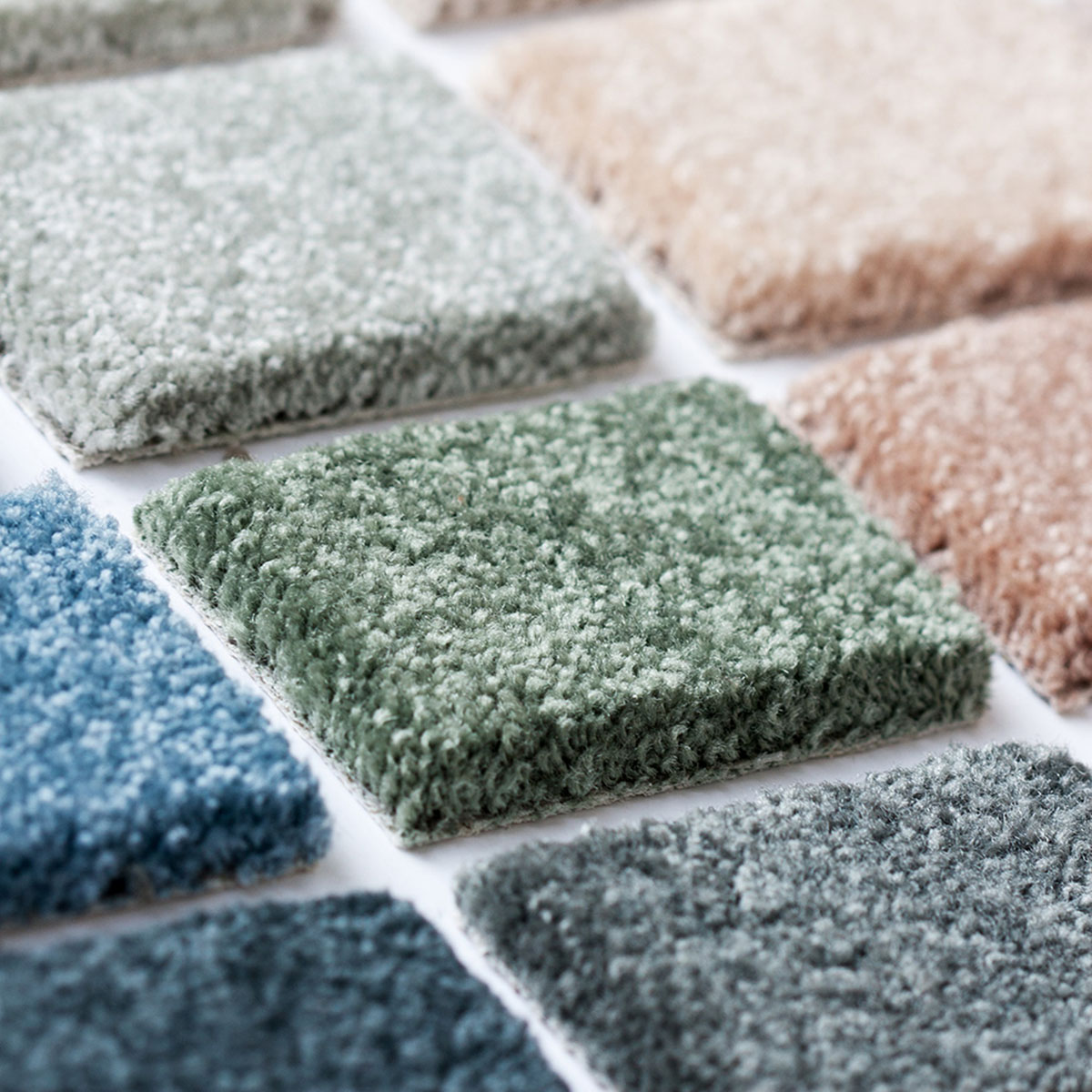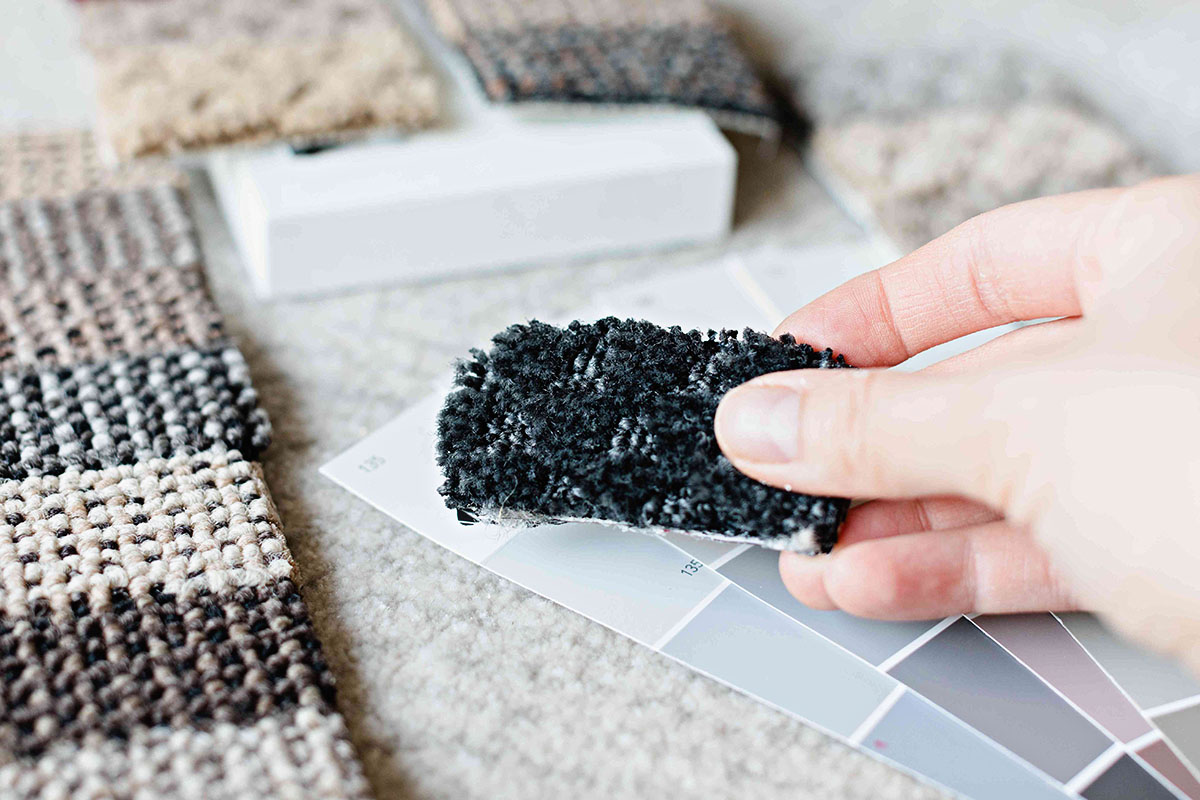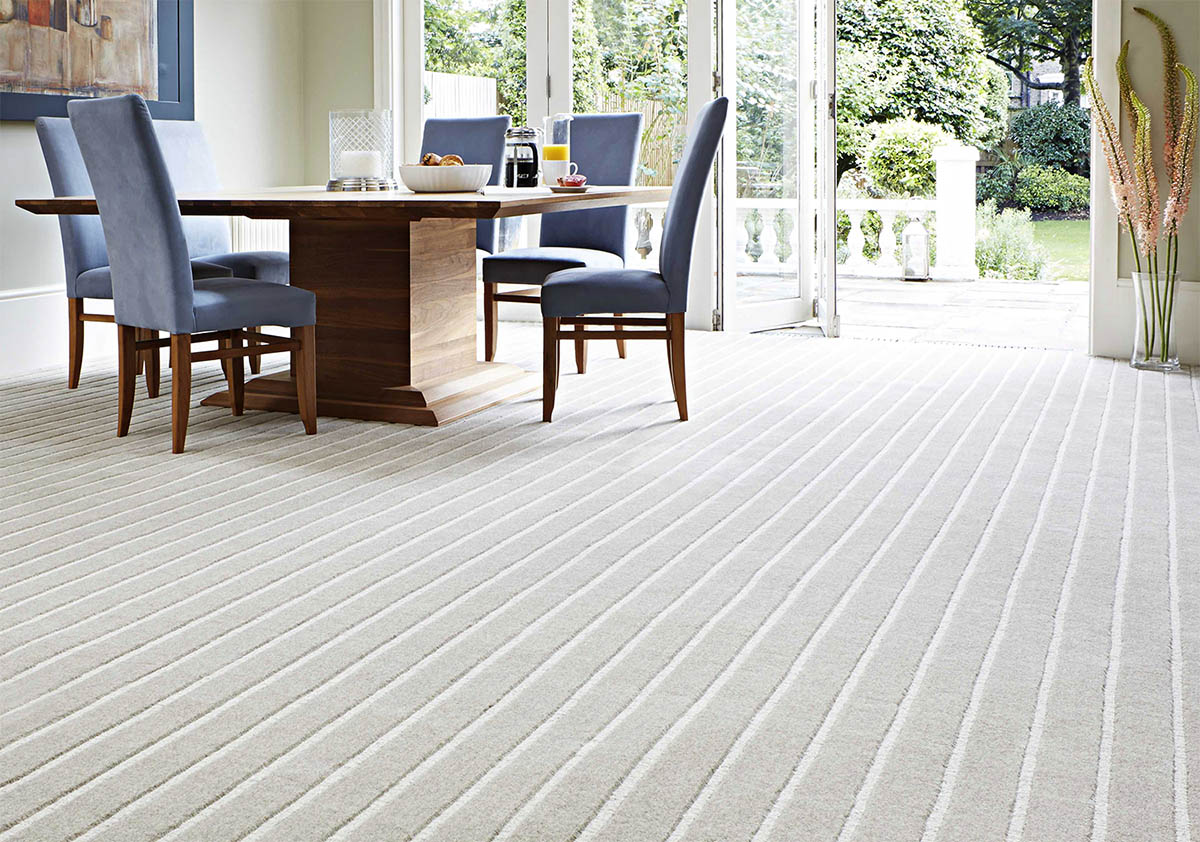

Articles
What Is A Carpet
Modified: February 25, 2024
Discover articles on what a carpet is and learn about its various types, styles, and benefits in our comprehensive guide. Explore carpeting options for your home or office.
(Many of the links in this article redirect to a specific reviewed product. Your purchase of these products through affiliate links helps to generate commission for Storables.com, at no extra cost. Learn more)
Introduction
Welcome to the world of carpets, where comfort and style come together to enhance the beauty of any space. Carpets have been an essential part of human existence for centuries, providing warmth, insulation, and a touch of elegance to homes, offices, and public spaces.
In this comprehensive guide, we will delve into the fascinating world of carpets, exploring their history, different types, materials used, manufacturing processes, benefits, upkeep, and common problems. Whether you are considering installing a new carpet or simply curious about this versatile flooring option, this article will serve as your go-to resource for all things carpets.
So, let’s dive right in and discover what makes carpets such a popular and timeless choice for flooring!
Key Takeaways:
- Carpets are more than just flooring; they provide comfort, style, and functionality. Understanding their history, types, and benefits helps in making informed decisions for a cozy and visually appealing space.
- Proper maintenance and prompt problem-solving are crucial for preserving the longevity and performance of carpets. Factors such as foot traffic, style, material, and budget should be considered when choosing the right carpet for any space.
Read more: What Is Frieze Carpet
Definition of a Carpet
A carpet is a type of floor covering that is made from soft, woven or tufted fabric. It is typically larger in size and covers an entire floor area. Carpets are designed to provide comfort underfoot, insulation, and enhance the overall aesthetic appeal of a space. They can be installed in residential, commercial, or public spaces, offering both practical and decorative benefits.
Carpets are available in a wide range of colors, patterns, and textures, allowing individuals to personalize their space and create a specific ambiance. Whether you prefer a plush and luxurious carpet in a cozy living room or a durable and stain-resistant carpet in a high-traffic area, there is a carpet option to suit every style and need.
While carpets are commonly associated with softness and warmth, they also serve functional purposes. They provide a non-slip surface, reduce noise levels by absorbing sound, and can even improve indoor air quality by trapping dust and allergens. Moreover, carpets offer a comfortable and safe surface for children to play on and can help prevent injuries from falls.
In summary, a carpet is a versatile flooring option that adds comfort, style, and functionality to any space. From their soft and luxurious texture to their ability to transform the look and feel of a room, carpets are an excellent choice for those seeking a beautiful and practical flooring solution.
History and Origins of Carpets
The history of carpets dates back thousands of years, with evidence of carpet-like coverings found in ancient civilizations such as Egypt, Persia (modern-day Iran), and China. The exact origin of carpets is a subject of debate among historians, but it is widely believed that the art of carpet weaving began in Central Asia and spread across the world.
One of the earliest known examples of carpet weaving can be traced back to ancient Egypt, where fragments of woven floor coverings have been discovered in tombs and archaeological sites. These carpets were made using reeds and plants, providing a rudimentary form of decoration and insulation.
The development of carpet weaving techniques and designs reached its peak during the Golden Age of Persian Carpet in the 16th and 17th centuries. Persian carpets gained international recognition for their exquisite craftsmanship and intricate designs, becoming highly sought-after luxury items among nobility and collectors.
In Asia, particularly in China, carpet weaving has a long history as well. Chinese carpets are renowned for their intricate motifs, symbolic meanings, and delicate craftsmanship. They became an emblem of status and were often used as gifts to royalty and diplomats.
During the Middle Ages, carpet production spread across Europe, with countries like Spain, France, and England developing their own unique carpet weaving traditions. Renaissance Europe saw carpets becoming a sign of wealth and social status, with wealthy households adorning their floors with extravagant tapestry carpets.
The introduction of mechanized carpet looms in the 18th century revolutionized the carpet industry, making production faster and more efficient. This led to the mass production of carpets, making them more affordable and accessible to a wider range of people.
In the modern era, the carpet industry has continued to evolve and innovate, with advancements in technology and design. Today, carpets are manufactured using a variety of materials and techniques, catering to different needs and preferences.
From ancient civilizations to the present day, carpets have remained an integral part of interior design, adding warmth, beauty, and character to homes, offices, and public spaces around the world.
Different Types of Carpets
Carpets come in a wide variety of types, each with its own unique characteristics and advantages. Understanding the different types of carpets can help you make an informed decision when choosing the right carpet for your space. Here are some of the most common types:
- Cut Pile: Cut pile carpets are created by cutting the loops of the carpet fibers, resulting in a soft, plush texture. This type of carpet is known for its luxurious feel and is a popular choice for bedrooms and living rooms.
- Loop Pile: Loop pile carpets have uncut loops, creating a dense, durable surface. They are resistant to crushing and are suitable for high-traffic areas such as hallways and commercial spaces.
- Berber: Berber carpets are a type of loop pile carpet that is characterized by its looped, textured surface. They are known for their durability and are commonly used in areas with heavy foot traffic.
- Frieze: Frieze carpets have long, twisted fibers that create a textured appearance. They are known for their resilience and ability to hide footprints and vacuum marks, making them ideal for busy households.
- Patterned: Patterned carpets feature intricate designs and patterns, adding visual interest to a space. They can range from bold and vibrant patterns to subtle and understated designs, making them a versatile option for various interior styles.
- Saxony: Saxony carpets have a dense, plush pile with a smooth, velvety appearance. They are luxurious and soft underfoot, making them a popular choice for formal spaces, such as dining rooms and master bedrooms.
- Plush: Plush carpets have a dense, even pile height, creating a uniform and smooth surface. They have a luxurious look and feel and are commonly used in upscale residential areas.
These are just a few examples of the many types of carpets available in the market. It is important to consider factors such as the level of foot traffic, desired aesthetic, and maintenance requirements when selecting the right type of carpet for your space. Consulting with a carpet professional can also help you make an informed decision based on your specific needs and preferences.
Materials Used in Carpets
Carpet materials play a crucial role in determining the overall performance, durability, and appearance of the carpet. There are various materials used in carpet manufacturing, each offering unique features and characteristics. Here are some of the most commonly used materials:
- Nylon: Nylon is one of the most popular and widely used carpet materials due to its durability and resilience. It has excellent resistance to staining and fading, making it suitable for high-traffic areas.
- Polyester: Polyester carpets are known for their softness and vibrant color options. They are stain-resistant and have good resistance to fading, making them a popular choice for residential spaces.
- Wool: Wool is a natural fiber that is highly valued for its luxurious feel and durability. It is naturally stain-resistant and flame-retardant, making it a premium choice for those seeking a sustainable and eco-friendly option.
- Acrylic: Acrylic carpets are known for their wool-like appearance and softness. They are resistant to fading and are often used as a cost-effective alternative to wool carpets.
- Olefin (Polypropylene): Olefin carpets are resistant to stains, moisture, and fading, making them suitable for both indoor and outdoor applications. They are often used in areas prone to spills and moisture, such as basements and kitchens.
- Blends: Carpet blends are made by combining two or more different fibers, such as nylon and polyester or wool and nylon. These blends are designed to harness the strengths of each fiber, resulting in a carpet with enhanced durability and performance.
When choosing a carpet material, it is essential to consider factors such as the level of foot traffic, desired comfort, maintenance requirements, and budget. Each material has its own advantages and considerations, so it’s important to assess your specific needs and preferences.
It’s worth noting that advances in technology have also led to the development of innovative and eco-friendly carpet materials, such as recycled fibers and natural plant-based fibers. These options provide environmentally conscious consumers with sustainable alternatives to traditional carpet materials.
Ultimately, the choice of material will depend on your specific requirements and personal preferences. Consulting with a carpet professional can help you navigate the various options and select the material that best suits your needs.
Read more: What Is A Berber Carpet
Manufacturing Process of Carpets
The manufacturing process of carpets involves several steps, each designed to transform raw materials into a finished product. While the exact process may vary depending on the type and style of carpet being produced, the following steps provide a general overview of the manufacturing process:
- Fiber Production: The first step in manufacturing carpets is the production of carpet fibers. Synthetic fibers, such as nylon or polyester, are created through a process called extrusion, where molten material is forced through a spinneret to form continuous filaments. Natural fibers, such as wool, are obtained from sheep or other animal sources.
- Yarn Manufacturing: Once the fibers are produced, they are spun into yarn. This process involves twisting the fibers together to create continuous strands of yarn. Yarns can be made of a single type of fiber or a blend of different fibers, depending on the desired characteristics of the carpet.
- Tufting: The tufting process is where the yarn is inserted into a backing material to create the carpet’s surface. This is done using a machine that contains hundreds of needles, which pierce through the backing and insert the yarn. The yarn is then held in place with adhesive or by interlocking with the backing material.
- Fabric Preparations: Once the tufting process is complete, the carpet goes through various fabric preparations. This may include shearing, where the carpet’s surface is trimmed to achieve a uniform pile height. It may also involve the application of a secondary backing to provide additional stability and strength.
- Finishing and Backing: After the fabric preparation, the carpet undergoes finishing processes to enhance its performance and aesthetics. This can include treatments such as anti-static and stain-resistant coatings. The carpet may also be backed with a primary backing to provide additional stability and reinforcement.
- Cutting and Inspection: Once the carpet is finished and backed, it undergoes a cutting process to shape it into specific sizes, whether it’s rolls, tiles, or custom dimensions. After cutting, the carpet is inspected for quality control, where any defects or imperfections are identified and addressed.
- Packaging and Distribution: The final step in the carpet manufacturing process involves packaging the carpets and preparing them for distribution. Carpets are typically rolled and wrapped in protective packaging. They are then ready to be shipped to various retailers, distributors, or directly to the customers.
The manufacturing process of carpets requires precision and expertise to ensure consistent quality and performance. Advanced technology and machinery have revolutionized the industry, allowing for efficient production and a wide range of carpet styles and designs.
It is worth noting that some carpet manufacturers follow environmentally-friendly practices by incorporating sustainable materials, reducing energy consumption, and recycling waste materials. These eco-conscious approaches ensure that carpets are not only beautiful and functional but also environmentally responsible.
Understanding the manufacturing process can provide insight into the craftsmanship and effort that goes into creating each carpet, resulting in a flooring option that adds both comfort and style to any space.
When choosing a carpet, consider the material, pile height, and density. Nylon is durable, while wool is luxurious. Low pile is easier to clean, while high pile is softer. Dense carpets are more resilient.
Benefits of Having a Carpet
Carpets offer numerous benefits that make them a popular choice for homeowners and businesses alike. From enhancing comfort to adding style and functionality to a space, here are some of the key benefits of having a carpet:
- Comfort and Warmth: Carpets provide a soft and cushioned surface, adding comfort and warmth to any room. They create a cozy atmosphere and are particularly enjoyable during colder months.
- Noise Reduction: Carpets have excellent sound-absorbing properties, reducing noise levels and minimizing echoes in a room. They help create a peaceful and quiet environment by absorbing footsteps, sounds from electronic devices, and outside noise.
- Safety: Carpets offer a non-slip surface, reducing the risk of slips and falls. This is especially beneficial for households with young children or elderly individuals who may be more prone to accidents.
- Insulation: Carpets act as a natural insulator, providing an additional layer of thermal resistance. In colder climates, carpets help retain heat, resulting in reduced energy consumption and lower heating bills. They also contribute to maintaining a stable indoor temperature in warmer climates by preventing cool air from escaping.
- Aesthetic Appeal: Carpets come in a wide variety of colors, patterns, and textures, allowing individuals to customize their space according to their personal style. They add visual interest and can serve as a focal point in a room, enhancing its overall aesthetic appeal.
- Indoor Air Quality: Carpets can improve indoor air quality by acting as a filter, trapping dust, allergens, and other particles. This can be especially beneficial for individuals with allergies or respiratory conditions, as the carpet helps to keep airborne pollutants at bay until they are properly removed.
- Soft Landing Surface: A carpet provides a comfortable and safe surface for children to play on. It cushions falls and reduces the risk of injuries, making it an ideal choice for playrooms and children’s bedrooms.
- Cost-Effective: Carpets are generally more affordable compared to other flooring options. They offer excellent value for the price, providing long-term durability and aesthetic appeal.
These benefits make carpets a versatile and practical choice for various spaces, including residential homes, offices, hospitality establishments, and commercial buildings. Whether you want to create a cozy living room, a quiet office space, or a stylish hotel lobby, carpets can help you achieve your desired atmosphere and functionality.
It is important to note that regular maintenance and cleaning are essential to preserve the benefits of carpets. Vacuuming, spot cleaning, and professional deep cleaning can help maintain the carpet’s appearance, extend its lifespan, and preserve its performance.
Maintenance and Cleaning of Carpets
Proper maintenance and regular cleaning are essential to keep carpets looking their best and prolong their lifespan. Carpets can accumulate dirt, stains, and allergens over time, so it’s important to establish a cleaning routine. Here are some maintenance and cleaning tips to keep your carpets in top condition:
- Vacuum Regularly: Regular vacuuming is the most important step in carpet maintenance. It helps remove loose dirt, dust, and debris from the carpet’s surface and prevents them from settling deep into the fibers. Aim to vacuum high-traffic areas at least once a week and less frequently used areas at least once a month.
- Address Spills and Stains Immediately: Accidents happen, so it’s crucial to address spills and stains as soon as possible. Blot the affected area gently with a clean cloth or paper towel to absorb as much liquid as possible. Avoid rubbing the stain, as it can push it deeper into the fibers. Use a mild detergent or carpet stain remover according to the manufacturer’s instructions to treat the stain.
- Regular Deep Cleaning: In addition to regular vacuuming, deep cleaning is necessary to remove embedded dirt, stains, and odors. You can hire a professional carpet cleaning service or use a DIY carpet cleaner, following the instructions on the machine or cleaning product. Deep cleaning should be done at least once or twice a year or more frequently in high-traffic areas or homes with pets and kids.
- Protect Heavy-Use Areas: High-traffic areas, such as entryways and hallways, are more prone to wear and tear. Place doormats at entrances to trap dirt and prevent it from being tracked onto the carpet. Consider using carpet runners or area rugs in heavily-used areas to provide an extra layer of protection for your carpet.
- Regularly Rotate Furniture: Furniture can leave indentations on carpets if left in the same spot for an extended period. To prevent this, regularly rotate your furniture to distribute the weight and prevent permanent marks on your carpet.
- Preventive Measures: Take preventive measures to minimize dirt and stains on your carpet. For example, remove shoes at the entrance or use shoe covers, especially if you have been outside in muddy or dirty areas. Place furniture pads under the legs of heavy furniture to prevent them from compressing and damaging the carpet.
- Professional Cleaning: Periodically, it’s a good idea to hire a professional carpet cleaning service to deep clean your carpets. They have specialized equipment and expertise to effectively remove deep-seated dirt and stains, leaving your carpets fresh and rejuvenated.
It’s important to follow the manufacturer’s cleaning guidelines for your specific carpet type. Some carpets may have unique care instructions or require specific cleaning products. By properly maintaining and cleaning your carpets, you can ensure they stay clean, fresh, and in excellent condition for years to come.
Regular maintenance and cleaning not only keep your carpets looking their best but also help promote a healthier indoor environment by removing allergens and improving air quality. With proper care, your carpets will continue to provide comfort, beauty, and functionality to your space.
Common Carpet-related Problems and Solutions
While carpets offer numerous benefits, they can sometimes be susceptible to problems that can affect their appearance and performance. Understanding common carpet-related problems and their solutions can help you address issues promptly and maintain the longevity of your carpets. Here are some of the most common problems and their recommended solutions:
- Stains: Stains are one of the most common issues with carpets, whether from spills, pet accidents, or other sources. For food and beverage spills, blot the stain immediately with a clean cloth and use a mild detergent or carpet cleaner to treat it. For tougher stains, consider using a specialized stain remover according to the manufacturer’s instructions.
- Wear and Tear: Over time, carpets can show signs of wear and tear, especially in high-traffic areas. To prevent excessive wear, place rugs or runners in heavily-used areas. Regularly rotate furniture to distribute weight and prevent permanent indentations. Consider professional restoration or patching for severely damaged areas.
- Carpet Odors: Carpets can develop odors due to spills, pet accidents, or general use. To eliminate odors, start by thoroughly vacuuming the carpet. For localized odors, use a mixture of vinegar and water to blot the affected area. Consider using baking soda as a natural deodorizer by sprinkling it over the carpet, letting it sit for a few hours, and then vacuuming it up.
- Allergens and Dust: Carpets can trap allergens, dust, and other particles over time. Regular vacuuming is important to remove these allergens and maintain indoor air quality. Consider using a vacuum cleaner with a HEPA filter to capture smaller particles effectively. Professional deep cleaning can also help remove deep-seated allergens and dust.
- Mold and Mildew: Excessive moisture can lead to the growth of mold and mildew in carpets, which not only damages the carpet but also poses health risks. If you notice signs of mold or mildew, it is essential to address the issue promptly. Dry the affected area thoroughly and consider using a mold and mildew cleaner or contacting a professional for remediation.
- Color Fading: Over time, carpets can experience color fading due to exposure to sunlight or harsh cleaning chemicals. To prevent color fading, consider using window treatments or UV-blocking films to protect the carpet from direct sunlight. When cleaning, use mild cleaners specifically formulated for carpets to avoid causing further damage.
- Pet Damage: Pets can sometimes cause damage to carpets, including stains, odors, and fraying. To address pet damage, clean up accidents promptly, blotting the area with a clean cloth and using an enzyme-based cleaner to neutralize odors. Repair frayed carpet edges by trimming or contacting a professional for patching or re-weaving.
It’s important to address carpet problems as soon as they arise to prevent further damage and maintain the overall appearance and performance of your carpets. If you encounter persistent or severe issues, it may be beneficial to consult with a professional carpet cleaner or repair specialist for expert advice and assistance.
By being proactive and taking prompt action, you can effectively resolve common carpet-related problems and ensure that your carpets remain in optimal condition for years to come.
Read more: What Are Carpet Tiles
Choosing the Right Carpet for Your Space
Choosing the right carpet for your space is essential to create a comfortable and visually appealing environment. With numerous options available, it can be overwhelming to make the right choice. Consider the following factors to help you select the perfect carpet:
- Foot Traffic: Evaluate the level of foot traffic in the area where the carpet will be installed. High-traffic areas, such as hallways and living rooms, require carpets with higher durability and stain resistance. Low-traffic areas, such as bedrooms, may allow for softer and more luxurious carpet options.
- Style and Aesthetics: Consider the overall style and aesthetics of your space. Choose a carpet that complements the existing decor and color scheme. Consider the texture and pattern of the carpet, ensuring it aligns with your desired design aesthetic.
- Material: Different carpet materials have distinct characteristics and performance qualities. Nylon and polyester are durable and stain-resistant, while wool offers natural softness and eco-friendliness. Consider your priorities regarding comfort, sustainability, and maintenance when selecting the material.
- Color: The color of the carpet plays a significant role in the overall look and feel of the space. Choose a color that coordinates with the room’s furniture, walls, and decor. Lighter colors can create a sense of openness and brightness, while darker colors can add depth and coziness.
- Texture: Consider the texture of the carpet and how it will enhance the comfort and aesthetics of your space. Options range from plush and soft textures to more contemporary and textured designs. Determine the desired level of comfort and visual impact when selecting the texture.
- Budget: Set a budget for your carpet purchase. Consider the long-term investment in terms of durability and lifespan. While higher-quality carpets may have a higher upfront cost, they tend to offer better performance and longevity.
- Maintenance: Evaluate the maintenance requirements of different carpet options. Some materials and textures may be more prone to staining or require more frequent cleaning. Consider your lifestyle and the amount of time you can dedicate to carpet maintenance.
- Samples and Swatches: Before making a final decision, request samples or swatches of the carpet options you are considering. This will allow you to see how the carpet looks and feels in your space, helping you envision the end result.
Taking the time to consider these factors and exploring different carpet options will help you choose a carpet that perfectly suits your space and meets your needs. Additionally, consult with carpet professionals who can provide guidance and expert advice based on your specific requirements.
Remember, choosing the right carpet involves striking a balance between style, functionality, and personal preferences. With thorough research and careful consideration, you can find the ideal carpet that will transform your space into a comfortable and beautiful haven.
Conclusion
Carpets have proven to be more than just a flooring choice; they are a staple in interior design that adds comfort, style, and functionality to any space. Understanding the various aspects of carpets, from their history and manufacturing process to the different types and materials, helps us appreciate their significance in our homes, offices, and public spaces.
Whether you’re seeking a soft and luxurious feel, noise reduction, insulation, or simply a visually appealing element, carpets offer a myriad of benefits. They create a cozy and warm environment, reduce noise levels, provide a safe surface for children to play on, and even improve indoor air quality by trapping dust and allergens. Moreover, carpets come in various types, materials, colors, and textures, allowing for customization and personalization to suit individual preferences.
However, proper maintenance and cleaning are crucial for preserving the benefits and aesthetics of carpets. Regular vacuuming, prompt stain removal, and periodic deep cleaning can help extend the lifespan of carpets and maintain their visual appeal. Additionally, being mindful of common carpet-related problems, such as stains, wear and tear, and odors, and addressing them promptly can ensure the longevity and performance of your carpets.
When selecting a carpet, factors such as foot traffic, style, material, color, and budget need to be considered. Each space is unique, and finding the right carpet involves striking a balance between functionality and aesthetics, while also aligning with personal preferences and maintenance capabilities.
In conclusion, carpets have a significant impact on the overall atmosphere and comfort of a space. With their ability to enhance aesthetics, provide insulation, and add a touch of luxury, carpets remain a popular choice for homes, offices, and various commercial spaces. By understanding their history, types, materials, and maintenance requirements, you can make an informed decision and enjoy the many benefits that carpets have to offer.
Frequently Asked Questions about What Is A Carpet
Was this page helpful?
At Storables.com, we guarantee accurate and reliable information. Our content, validated by Expert Board Contributors, is crafted following stringent Editorial Policies. We're committed to providing you with well-researched, expert-backed insights for all your informational needs.
